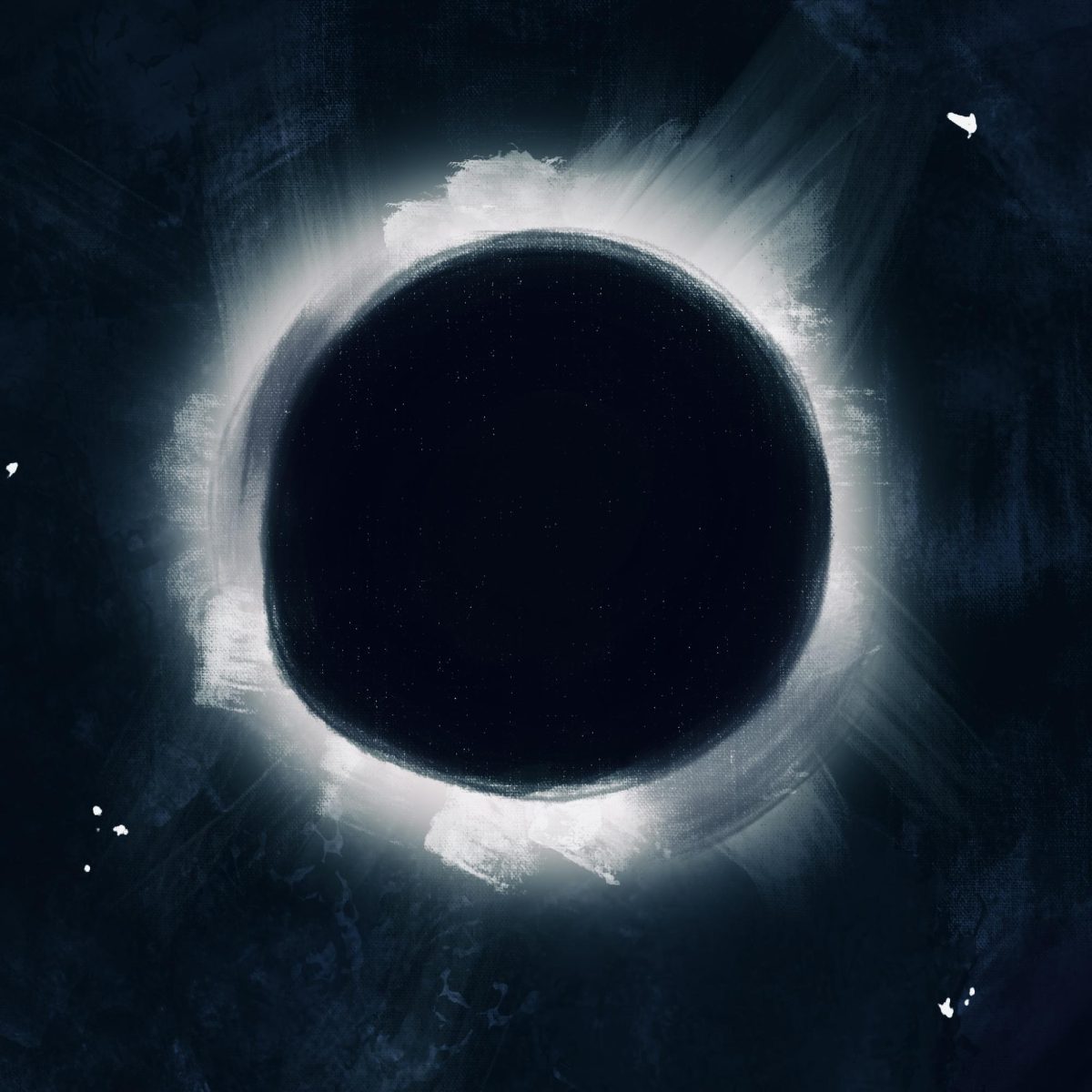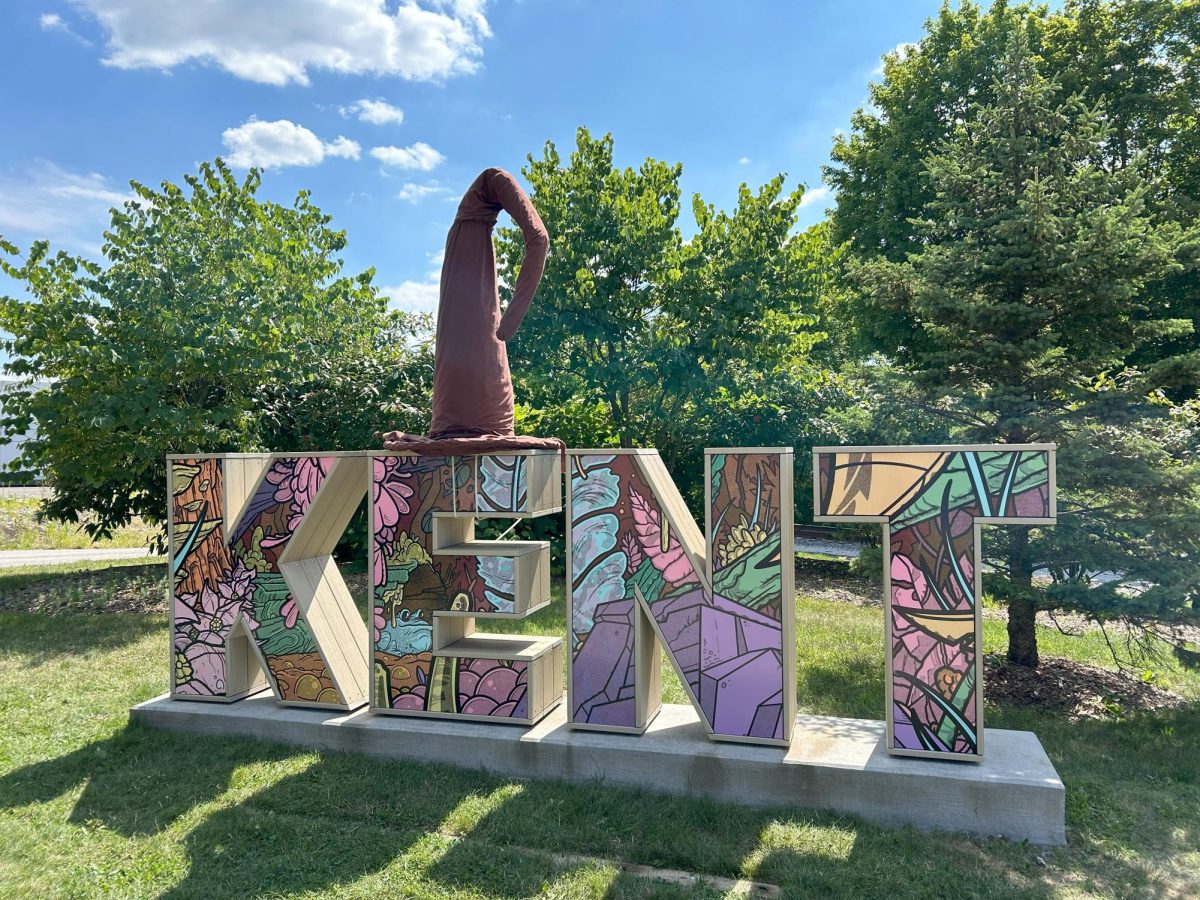Complete darkness will fill the sky for a few minutes on April 8, when the city of Kent experiences a total solar eclipse for the first time in 200 years.
Kent will see the moon cross in front of the sun for approximately four minutes, beginning at 3:13 p.m. according to NASA, so let’s brush up on the science behind the eclipse.
Alex Clevinger, a physics graduate student and a member of the Compact Stars Research Group, said during a total solar eclipse the moon will be in between the sun and the Earth.
“The moon is going to be in such a position that it blocks the sun and it puts its shadows onto the Earth,” Clevinger said.
Because of how the moon does not orbit circularly and can be slightly off its axis, total solar eclipses do not always occur often, he said.
During a solar eclipse, the moon will be in between the sun and the Earth which results in a shadow being casted on the Earth, he said.
“Every time the moon goes in between us and the sun, it might not necessarily cast a shadow onto the Earth so it’s a pretty rare occurrence,” Clevinger said.
Clevinger said one of the reasons eclipses occur on Earth more than other planets is because of the size of the moon and how it compares to the size of the Earth.
“Because the moon is about a fifth of the size of the Earth, which is abnormally large for a moon compared to other planets,” he said, “the apparent size of the sun and the moon can be about the same size so that’s what makes it kind of unusual.”
The difference between a solar eclipse and a total solar eclipse is the totality, a period when the moon obscures the sun, Clevinger said. Only the places in the line of totality, the path in which the moon is visibly in front of the sun, will experience totality.
“Not everywhere in the world is going to be in this totality region,” he said. “It’s just a very small band… so we’re kind of lucky that Kent happens to be in that band.”
Other Ohio cities which will be a part of the totality line include Akron and Cleveland, Clevinger said.
Eric Taylor, an associate professor of earth science at the Kent State Stark campus, advised people to focus on their safety as the solar eclipse can be viewed more so as a social event which can cause harm if individuals are not aware of their surroundings.
“There is a safety aspect as well… ’cause people might stop in the middle of the road to look at [the eclipse] without thinking, ‘I should probably get over,’” Taylor said.
Regarding what to do during an eclipse, Clevinger said he advises people not to stare at the sun but rather wear protective sunglasses which the physics department will provide closer to the day of.
“Even during the eclipse I would still recommend using the eclipse glass because looking directly at the sun can be damaging to retinas,” Clevinger said.
During a solar eclipse there are no changes in the harmfulness of the sun’s UV rays; however, people are more likely to stare at the sun during an eclipse which increases the need for protective eyewear, he said.
Taylor said during a total solar eclipse the weather experiences nighttime conditions.
“From the perspective of the environment or organisms and such basically, it’s just like a super short nighttime,” Taylor said.
Because of the shortness, he said the erosion and weathering during an eclipse is indistinguishable from any other time of the day.
“The rarity at which a total solar eclipse happens at any given spot on the Earth is so little,” he said. “I don’t know if we have enough data to say there is a strong or weak impact on a particular place.”
Taylor said there are some theories which explore how different animals respond to an eclipse.
“I read some interesting observations like [animals] just go in nests or they’ll behave as if it were nighttime thanks to a big storm,” he said.
Other scientists have made observations about higher order thinking organisms like dolphins and chimpanzees, and discovered they point and look at the eclipses, Taylor said.
Taylor said during eclipses people may experience weather condition changes like a drop in temperature which his mother felt one time during a recent eclipse while being in southern Utah.
“She just was sitting outside, it was a nice warm day and it started to get cooler and cooler and then it was actually cold,” he said.
Taylor’s mother was able to feel the drop in temperature as she was at a higher evaluation point, about 3,000 ft., which causes cooler temperatures when the sun goes down regardless of her spot in the line of totality, he said.
After the moon finished passing between the Earth and the sun, Taylor’s mom felt the temperature return to normal, Taylor said.
Clevinger said a total solar eclipse occurring in northeast Ohio is such a rare occurrence as Kent will not see another total solar eclipse for a long time.
“Here in Kent or northeast Ohio, we won’t see another total eclipse like this until 2099, but there’s going to be several other ones that happen in other places in the world,” he said.
The city of Kent and the university have already begun planning activities for early April. The city has planned events including an Eclipse Edition of the Main Street Kent 5k and a tribute to Pink Floyd at The Kent Stage, and the university has activities set for April 8.
For further information about actives, times and parking, visit Kent Total Eclipse 2024.
Adriana Gasiewski is a beat reporter. Contact her at [email protected].























